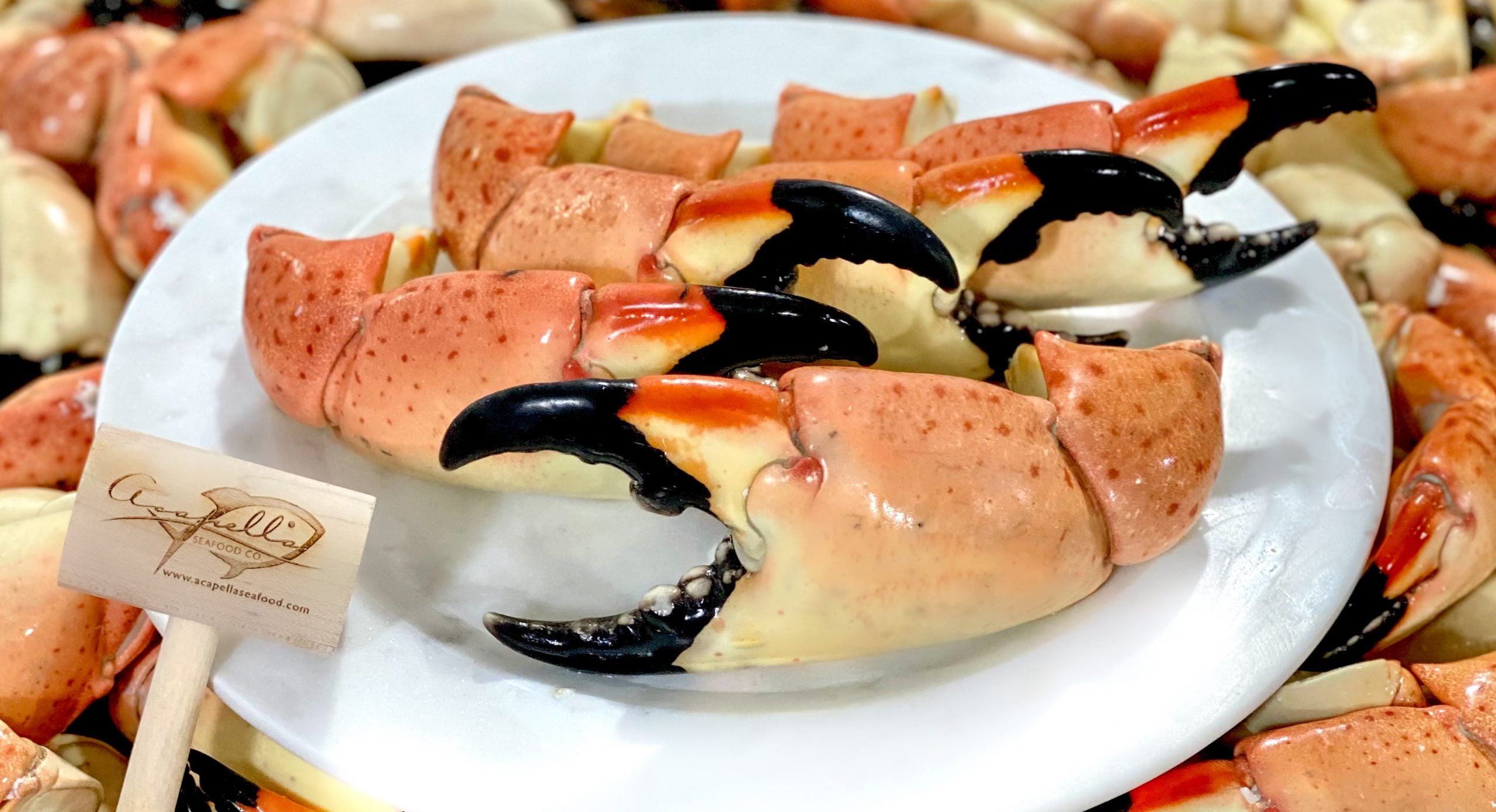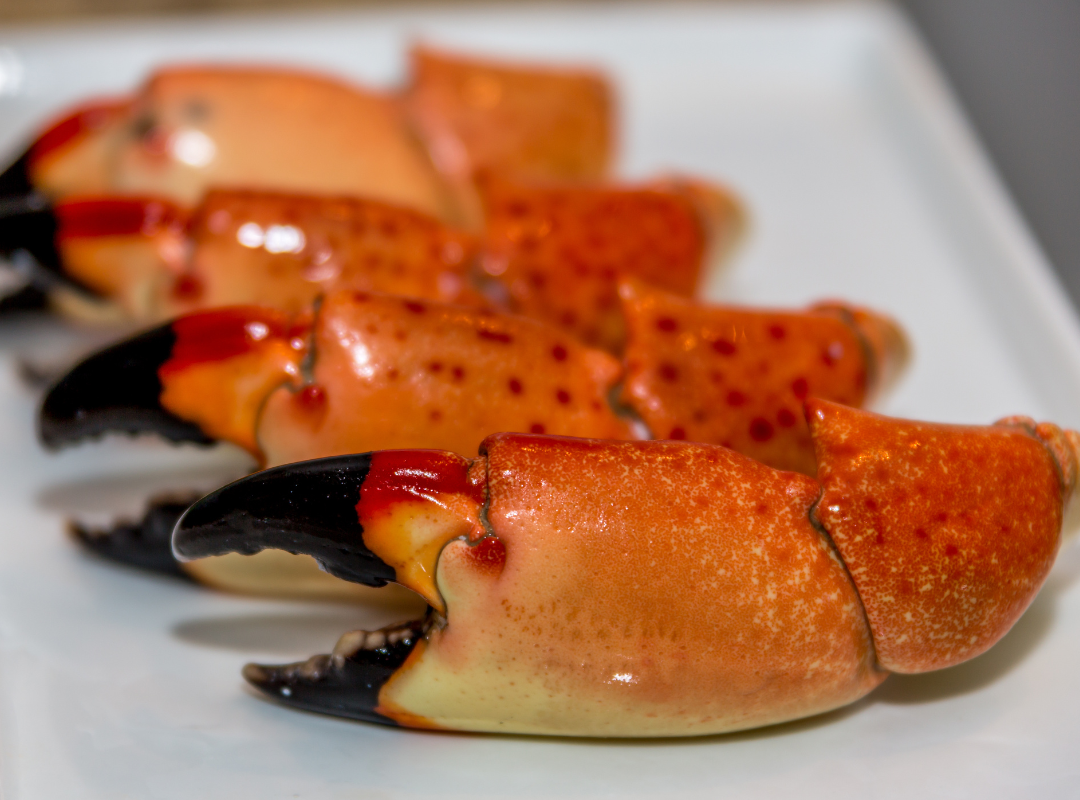
· By Lucas Calderon
Stone Crab Season: A Guide to Everything You Need to Know
Stone Crab Season: A Time of Celebration and Excitement
The coming of Stone Crab Season fills seafood enthusiasts and coastal towns with excitement and happiness. It’s time to enter the stone crabs world as the ocean waters cool and coastal communities prepare for this widely awaited occasion.
We will look at every aspect of Stone Crab Season in this thorough guide, from its ecological significance and laws to sustainable harvesting tactics, delicious cooking techniques, and the cultural influence on coastal communities.
What Are Stone Crabs?
Let’s unpack the intricacies of these enthralling crabs as we start on our Stone Crab Season adventure. Menippe mercenaria, or stone crabs, are endemic to the Gulf of Mexico and the Atlantic Ocean. They are known for their amazing claws, play an important part in the coastal ecology, and have become a delicacy enjoyed by seafood enthusiasts.
When Is Stone Crab Season?
Stone Crab Season, which runs from mid-October to May, is greatly anticipated by seafood lovers and coastal towns. The season’s precise duration varies significantly depending on location and local rules, but its short duration adds to the fascination and excitement around these delectable crustaceans. Stone crabs take the stage, enticing commercial and recreational fishers with their tasty claws.
Harvesting Stone Crab
Commercial Harvesting
Stone Crab Season is a big opportunity for commercial fishermen to catch these treasured crustaceans and meet the expanding demand from seafood markets, restaurants, and consumers. Expeditions to coastal waters are launched by fishing vessels equipped with specific traps designed to collect stone crabs without harming the crabs or their surroundings. These traps are strategically positioned to maximize the possibilities of a successful catch.
Recreational Harvesting
Stone Crab Season draws leisure anglers who want to experience the thrill of the capture and commercial fishermen. Fishing aficionados gather equipment, ranging from nets to traps, ready to experience the thrill of collecting their stone crab claws. Recreational fishers are critical in sustaining the stone crab population for future generations, with rules in place to ensure sustainability.
Ethical Harvesting Methods
Certain restrictions and harvesting criteria must be followed to preserve the survival of stone crabs. The Florida Fish and Wildlife Conservation Commission (FWC) is critical to successfully managing Stone Crab Season, enforcing restrictions such as size limitations, using approved traps, and releasing egg-bearing females responsibly. Following these rules, we can conserve the stone crab population for future generations.
Releasing Egg-Bearing Females
Females bearing eggs, often known as “berried” females, are critical to stone crab conservation efforts. These laws attempt to maintain the stone crab population’s reproductive capacities, allowing them to thrive in their native environments. If seized during Stone Crab Season, egg-bearing females must be released promptly, according to the FWC.
This method guarantees that females may reproduce and contribute to future generations replenishment. The discharge of berried females protects the stone crab population by allowing them to repair their claws and procreate.
Using Approved Traps
Ethical harvesting procedures are critical for preserving the coastal ecosystem’s fragile equilibrium. The proper way to collect stone crabs is to gently remove only the claws and release the living crab to its native environment. We help the long-term survival of this magnificent species by adhering to these behaviors.
Keeping the Stone Crab Population Alive
Sustainability measures and conservation efforts have gained popularity in recent years to preserve the stone crab population. Research initiatives include monitoring population dynamics, assessing habitat preferences, and creating awareness about sustainable fishing techniques. We actively contribute to protecting stone crabs and their vulnerable maritime habitats by sponsoring these activities.
Stone Crab Season as a Cultural Celebration
Stone Crab Season is a time to commemorate the cultural importance that surrounds this culinary tradition, as well as to indulge in delicious tastes. Stone crab festivals, seafood tournaments, and lively gatherings bring coastal villages to life, bringing locals and visitors together to enjoy the bounty of the sea.
Getting Ready for Stone Crab Season
Stone Crab Season is here, and seafood stores, restaurants, and coastal towns are gearing up to fulfill the demand for fresh stone crab claws. Pre-season promos and reservation options are available from local establishments, allowing lovers to reserve their share of these exquisite gems.
Stone Crab Season’s Economic Impact
Beyond its biological relevance, Stone Crab Season is economically significant for coastal towns. Local fishermen and seafood companies rely on the season to make a living, while tourists and visitors looking for fresh stone crab claws boost the surrounding economy.
Culinary Delights: How to Cook and Eat Stone Crabs
Once you’ve collected a supply of fresh stone crab claws, it’s time to delve into the culinary options. Popular cooking techniques include boiling, steaming, grilling, and even eating them raw as part of a cold seafood buffet. Experimenting with dipping sauces like acidic mustard-based sauces or spicy cocktail sauces enriches the dining experience by enabling the delicate taste of the stone crab flesh to shine.
Whether you choose to stick to the classic cooking methods or venture into these creative options, the goal is to highlight the natural flavor and tenderness of the stone crab claws.
Health Benefits of Stone Crab Meat
Stone Crab Season tastes not only satisfy the palate but also provide various health advantages. Stone crab flesh is low in fat, high in protein, and high in vital elements such as Omega-3 fatty acids, boosting general health and a balanced diet.
Conclusion
As Stone Crab Season approaches, there is a sense of expectation and excitement in the air. We can preserve the survival of this valued delicacy by learning the restrictions, supporting ethical harvesting procedures, and relishing the tastes responsibly.
Let us go on this adventure, savoring the beauties of Stone Crab Season while recognizing the work undertaken to conserve these wonderful crustaceans for future generations.
Holy Crab Delivery is the ideal way to experience the freshest stone crabs without leaving the comfort of your own house. Holy Crab Delivery is a well-known seafood delivery service that sends the freshest stone crabs to your house. Their dedication to quality and customer satisfaction is unrivaled, guaranteeing that you receive the most succulent and fresh stone crab claws available.
Also Read: Ins and Outs of Florida Stone Crab Claws





